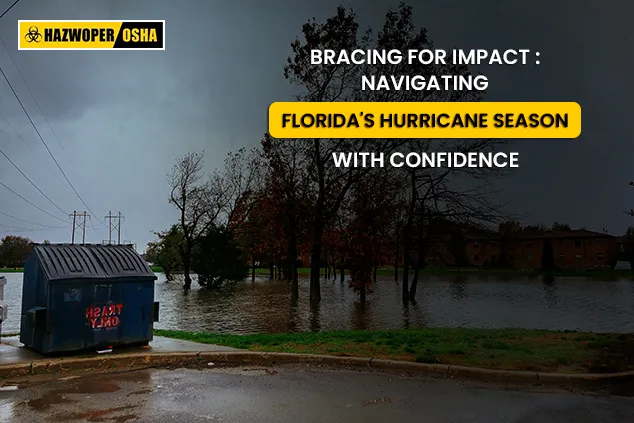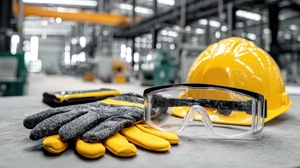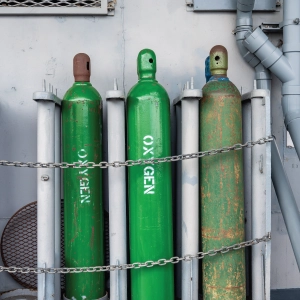Bracing for Impact: Navigating Florida's Hurricane Season with Confidence

Florida's vulnerability to hurricanes stems from its geographical location and climate. Positioned between the Atlantic Ocean and the Gulf of Mexico, Florida is exposed to tropical cyclones that form over warm ocean waters. The state's long coastline and flat terrain make it susceptible to storm surges and flooding, amplifying the impact of hurricanes.
Florida's hurricane season, from June 1st to November 30th, poses significant challenges and risks for construction workers. The state's susceptibility to hurricanes demands heightened awareness and preparedness from those in the construction industry. It also emphasizes the importance of ensuring people's safety amidst the challenges posed by hurricanes.
It's essential to recognize that home safety is as important as safety for construction workers, as both groups face risks during these severe weather events. Spreading early awareness about hurricane season in Florida is crucial as it helps people prepare for potential risks and take preventive measures.
Understanding the Threat
Florida's geographical location makes it vulnerable to hurricanes due to its long coastline and flat terrain. These storms can bring destructive winds, heavy rainfall, storm surges, and flooding, posing serious risks to construction workers and their worksites.
Strong winds can topple scaffolding, crane arms, and other temporary structures, while heavy rains can lead to soil erosion and unstable ground conditions. Flooding can also damage equipment and materials, leading to delays and additional hazards. This is why OSHA mandates safety training covering these topics and more. HAZWOPER OSHA Training LLC, a leading safety training provider, offers a range of OSHA-compliant safety training courses.
For the public, ensuring home safety by securing loose objects, boarding up windows, and having an evacuation plan in place is critical to mitigate the risks posed by hurricanes.
Essential Safety Tips for Construction Workers
Construction sites are dynamic environments that require vigilance and adherence to safety protocols to ensure the well-being of workers.
Stay Informed and Plan Ahead!
Monitor weather forecasts regularly and stay updated with the latest information from local authorities. Develop a comprehensive emergency plan for your worksite, including evacuation routes, designated safe areas, and protocols for securing equipment and materials.
Secure the Site
Before a storm hits, secure loose materials, tools, and equipment. Board up windows and doors to protect structures from wind and debris. Consider reinforcing temporary structures such as scaffolding and cranes to withstand strong winds.
Implement Emergency Plans
Ensure all workers are familiar with the emergency plan and understand their roles and responsibilities. Designate a safe area for workers to seek shelter during the storm, away from windows and exterior doors.
Protective Gear
Always wear appropriate personal protective equipment (PPE), including hard hats, safety glasses, gloves, and sturdy footwear. PPE should be worn even during cleanup and recovery efforts after the storm has passed.
Tool and Equipment Safety
Store tools and equipment in secure locations to prevent them from becoming projectiles in high winds. Shut down and secure heavy machinery to prevent damage and ensure it can be safely restarted after the storm.
Post-Storm Assessment
After the storm passes, conduct a thorough assessment of the worksite for damage and hazards. Proceed with caution and report any unsafe conditions immediately to your supervisor or safety officer.
Avoid Floodwaters
Do not enter floodwaters, as they may be contaminated and conceal hazards such as submerged debris, downed power lines, and unstable ground conditions or even other hazardous materials. OSHA recommends emergency workers to be prepared and obtain adequate training before embarking in emergency work that may result in encountering hazardous substances.
Click here to enroll in the relevant HAZWOPER training.
Key Factors in Hurricane Preparedness for Homes
Hurricanes are powerful natural disasters that can cause widespread devastation. Being prepared is pertinent to minimizing risks and ensuring safety. Here are some key factors in hurricane preparedness.
Importance of Early Preparation and Planning
Early preparation is key to staying safe during a hurricane. Create a family emergency plan that includes evacuation routes, designated meeting points, and communication methods. Prepare your home by reinforcing windows and doors, securing outdoor furniture, and trimming trees and shrubs.
Securing Your Home and Property
Secure your home by installing storm shutters or boarding up windows. Clear gutters and drains to prevent water buildup. Anchor outdoor objects that cannot be brought inside. Consider investing in a generator for backup power.
Community Resources and Support
During a hurricane or other natural disaster, it's essential to know where to turn for help and support. Local emergency management agencies play a key role in coordinating disaster response efforts and helping affected communities. These agencies offer a range of services, including emergency alerts, evacuation plans, and guidance on preparing for and recovering from disasters. They also work closely with other organizations, such as the Red Cross and local government agencies, to ensure a coordinated response to emergencies.
In the event of an evacuation, it's important to know how to access shelters and community support services. Emergency shelters are designated safe locations where individuals and families can seek refuge during a disaster. These shelters provide temporary housing, food, water, and medical care for those displaced by the storm. Local emergency management agencies can provide information on the locations of shelters in your area and how to access them. Additionally, community support services, such as volunteer groups and nonprofit organizations, often mobilize during disasters to help with clean-up efforts, food distribution, and other essential services. These resources can be invaluable in helping communities recover and rebuild after a hurricane.
Conclusion
Florida's hurricane season presents unique challenges for both construction workers and the public. However, with proper preparation and adherence to safety guidelines, risks can be minimized for everyone. It's crucial to remember that safety should always be the top priority, especially in the face of natural disasters.
By working together and staying vigilant, we can mitigate the impact of hurricanes and other natural disasters and ensure the safety and well-being of our communities.

 EN |
EN |  ES
ES






























































































































